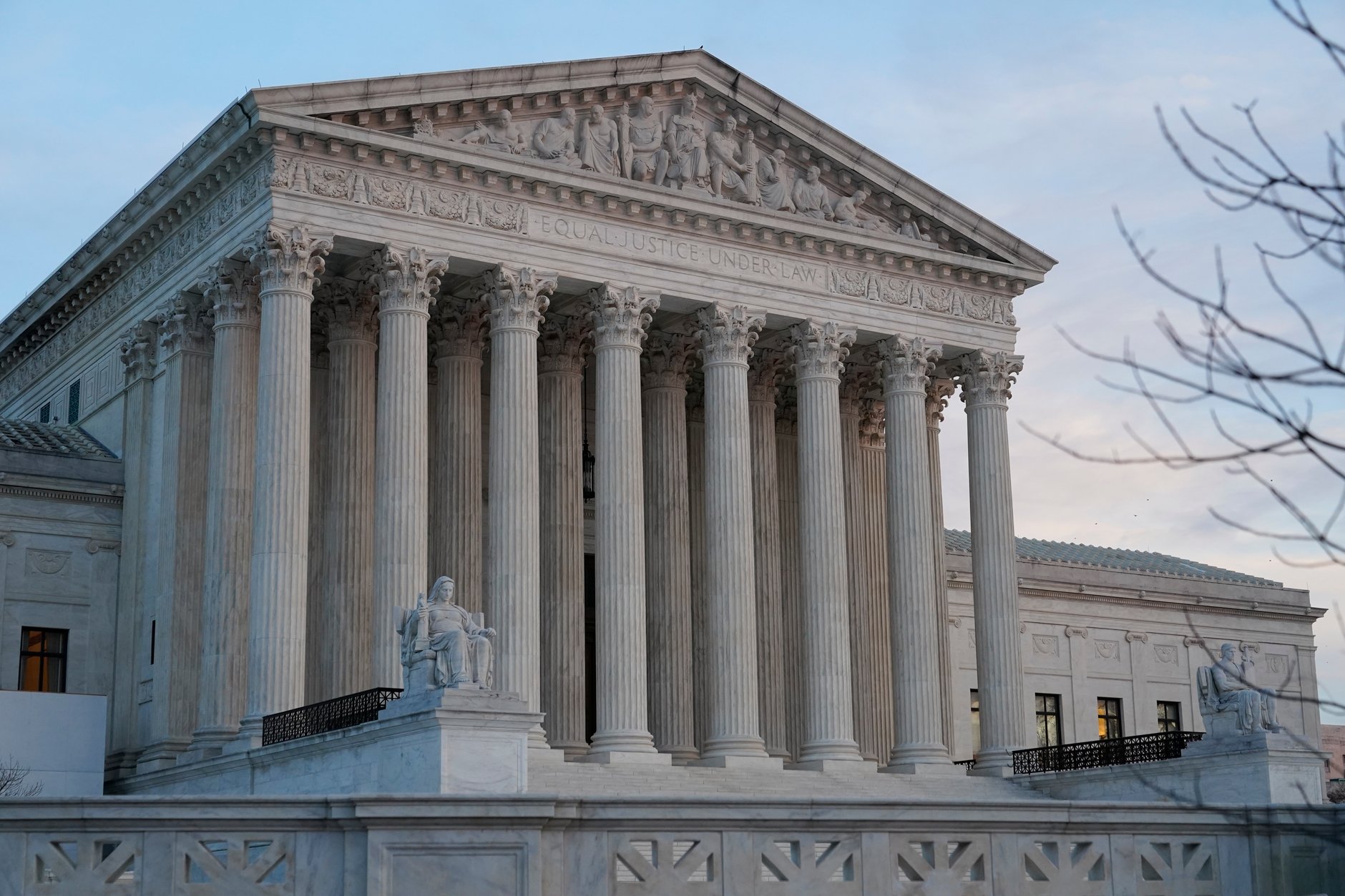WASHINGTON (CN) — The Supreme Court ruled 6-3 Tuesday to revive a lawsuit against the federal government by two Montana property owners who say a public road brought increased traffic, trespassers and theft.
Lower courts had ruled the suit by Larry Steven Wilkins and Jane Stanton barred by the Quiet Title Act, which has a 12-year statute of limitations, but Justice Sonia Sotomayor wrote for the majority that the law in question is a nonjurisdictional claims-processing rule.
“While the Government warns that revisiting precedent results in uncertainty, no revisiting is necessary here," Sotomayor wrote. "Far more uncertainty would follow from the Government’s method of divining definitive interpretations from stray remarks."
The roots of the case lie in an easement that the U.S. Forest Service obtained in 1962 for Robbins Gulch Road, a 60-foot drag that sits on land in rural Montana owned by Wilkins and Stanton. Wilkins and Stanton say people now shoot at their houses and hunt on their land thanks to the sign that the Forest Service erected on the road in 2006 with the words “public access through private lands."
After a failed attempt to get the Forest Service to address the problem in 2017, the landowners filed suit to determine the ownership of the easement. They appealed to the Supreme Court after the Ninth Circuit affirmed dismissal of their case under the Quiet Title Act, codified at Section 2409a(g) of Title 28.
The landowners were represented by Jeffrey McCoy with Pacific Legal Foundation. He called Tuesday's outcome "a major victory for property rights."
“The decision affirms that the government cannot manipulate procedural rules to prevent property owners from defending their constitutional rights," McCoy added.
At oral arguments in November, pushing the justices for the claims-processing rule interpretation, McCoy quoted precedent from the 2011 case Henderson ex rel. Henderson v. Shinseki. Such timeframes are meant "to promote the orderly progress of litigation," their lawyer said, not deprive a court of authority to hear a case.
Sotomayor explained in the majority opinion Tuesday that the high court has never definitively interpreted the Quiet Title Act as jurisdictional, making it difficult to endorse the government’s argument about legislative acquiescence. In the decades since Congress created the law in 1986, she adde, none of the Supreme Court’s decisions have established the time limit is jurisdictional.
“So there was no definitive judicial interpretation to which Congress could acquiesce,” Sotomayor wrote. “The mere existence of a decision employing the term jurisdiction without elaboration does not show Congress adopted that view. Nor can the Government’s handful of lower court opinions stand in for a ruling of this Court, especially where some of these decisions contain only fleeting references to jurisdiction.”
Justice Clarence Thomas saw it differently, however, with Chief Justice John Roberts and Justice Samuel Alito joining him in dissent.
“In the Quiet Title Act of 1972, Congress waived this immunity and consented to suits against the United States in order to determine the status of disputed property. Congress conditioned this consent on, among other things, a 12-year statute of limitations: ‘Any civil action under this section, except for an action brought by a State, shall be barred unless it is commenced within twelve years of the date upon which it accrued,’” Thomas wrote. “This Court has long construed such conditions on waivers of sovereign immunity as jurisdictional. And, it has acknowledged the jurisdictional nature of the Quiet Title Act’s statute of limitations in several precedents.”
Thomas said the facts of the case undercut the majority’s stance.
“In another context, the majority’s conclusion is arguably plausible. But, in this context, it is simply incorrect,” he wrote. “As a condition on the United States’ limited waiver of sovereign immunity in the Quiet Title Act, the Act’s statute of limitations is jurisdictional. Moreover, in light of this Court’s longstanding case law, the jurisdictional character of the time bar would have been well understood by the 1972 Congress.”
Justices Elena Kagan, Ketanji Brown Jackson, Brett Kavanaugh and Amy Coney Barrett joined Sotomayor in the majority.
Representatives for the Department of Justice did not immediately respond to a request for comment on the ruling Tuesday.
Subscribe to Closing Arguments
Sign up for new weekly newsletter Closing Arguments to get the latest about ongoing trials, major litigation and hot cases and rulings in courthouses around the U.S. and the world.









